Overview of Brain Research Hospot Database(BRHD)
Database Background
Brain science is an emerging dynamic multidisciplinary basic research frontier and generates a lot of valuable data, but the utilization of these data still exists several obstacles, such as fragmentation, heterogeneity, availability and different annotation of the data must be overcome. To construct a community that provides resources without these hurdles, we have developed Brain Research Hotspot Database (BRHD).
Introduction to the Home database page

Study Data Organization
| Component | Description |
|---|---|
| Study | A study is a container for all data and metadata associated to an experiment designed to assess BRHD model response. |
| Matrices | Matrices used to group models within a study. |
| Matrix Items | Matrix items are the generic term for an individual BRHD model. |
| Assay Images & Videos | Images and videos are attached to a matrix item and displayed within a study. |
Data Sources
| Source | Data Sources | External Links | Description |
|---|---|---|---|
| 1 | Pubmed | https://pubmed.ncbi.nlm.nih.gov/ | PubMed® comprises more than 30 million citations for biomedical literature from MEDLINE, life science journals, and online books. Citations may include links to full-text content from PubMed Central and publisher web sites. |
| 2 | Web of Science Core Collection | https://www.webofscience.com/wos/woscc/basic-search | Search the world’s leading scholarly journals, books, and proceedings in the sciences, social sciences, and arts and humanities and navigate the full citation network. |
| 3 | Derwent Innovations Index | https://www.webofscience.com/wos/diidw/basic-search | Combines unique value-added patent information indexed from over 50 patent issuing authorities in the Derwent World Patent Index (1963-present) with patent citations indexed from the Derwent Patents Citation Index (1973-present). |
| 4 | Free Patents Online(FPO) | https://www.freepatentsonline.com/ | Free Patents Online is a powerful patent application and search website in the United States, providing search and download of US patents and patent applications, some European patents, Japanese patents and WIPO (World Intellectual Property Organization) patents. |
| 5 | Array Express | https://www.ebi.ac.uk/arrayexpress/ | ArrayExpress Archive of Functional Genomics Data stores data from high-throughput functional genomics experiments, and provides these data for reuse to the research community. |
| 6 | Gene Expression Omnibus (GEO) | https://www.ncbi.nlm.nih.gov/geo/ | GEO is a public functional genomics data repository supporting MIAME-compliant data submissions. Array- and sequence-based data are accepted. Tools are provided to help users query and download experiments and curated gene expression profiles. |
| 7 | Cell Marker | http://biocc.hrbmu.edu.cn/CellMarker/ | By manually curating over 100,000 published papers, 4,124 entries including the cell marker information, tissue type, cell type, cancer information and source, were recorded. At last, 13,605 cell markers of 467cell types in 158 human tissues/sub-tissues and 9,148 cell makers of 389 cell types in 81 mouse tissues/sub-tissues were collected and deposited in CellMarker. CellMarker provides a user-friendly interface for browsing, searching and downloading markers of diverse cell types of different tissues. Furthermore, a summarized marker prevalence in each cell type is graphically and intuitively presented through a vivid statistical graph. |
| 8 | Online Mendelian Inheritance in Man(OMIM) | https://omim.org/ | OMIM is a comprehensive, authoritative compendium of human genes and genetic phenotypes that is freely available and updated daily. The full-text, referenced overviews in OMIM contain information on all known mendelian disorders and over 16,000 genes. OMIM focuses on the relationship between phenotype and genotype. It is updated daily, and the entries contain copious links to other genetics resources. |
| 9 | Malacards | https://www.malacards.org/ | MalaCards is an integrated database of human maladies and their annotations, modeled on the architecture and richness of the popular GeneCards database of human genes. |
Database Features
Instroduction of the Brain Research Hotspot Database(BRHD)
BRHD integrates a variety of brain science data resources, provides a freely shared and accessible viewing and download environment, and develops original functions based on these data, providing references and insights for brain research.
Featured Resources
Disease-genome network
Disease genome network is a tool for displaying and searching genes and variants related to brain diseases, and visualizing them to form a network of associations between brain diseases and genes.
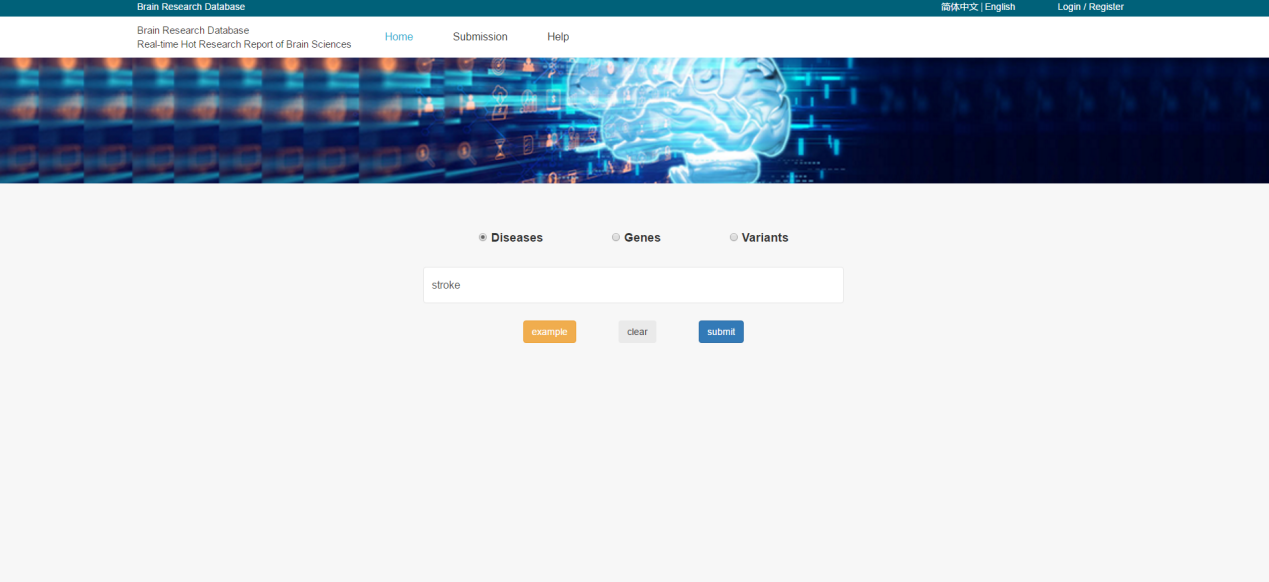
In the search interface, the user selects the search type(1), enters the search keywords, or clicks "Example" (2)to get an example display.
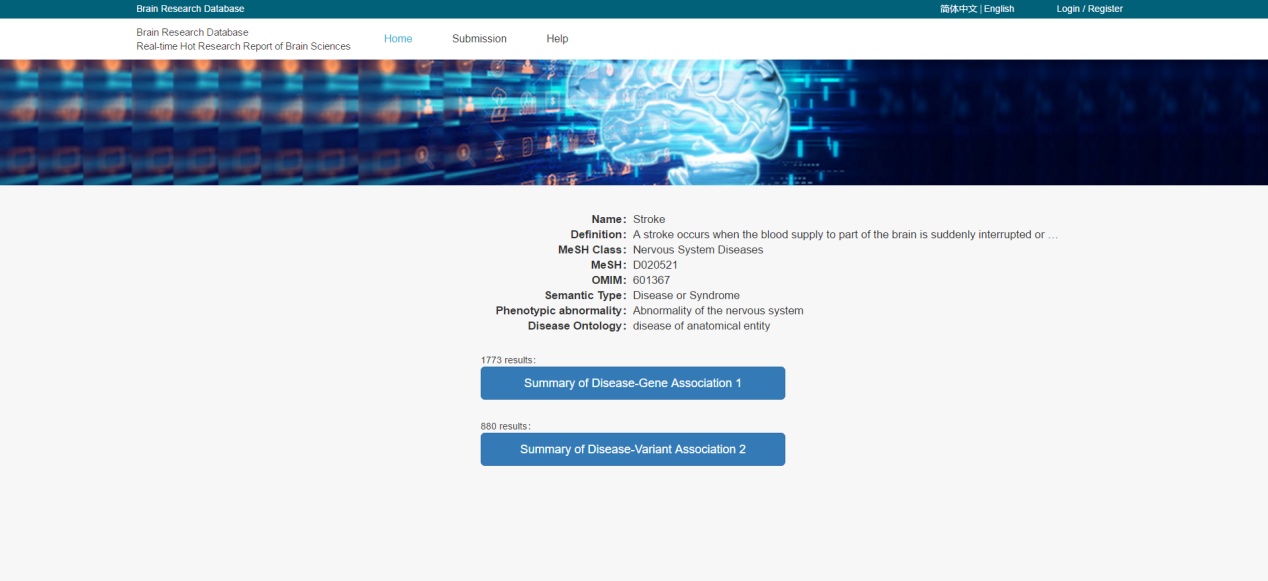
The preliminary search results (1) are displayed here, as well as the quantity statistics of the search results and the relationship models related to them are available for selection (2) .
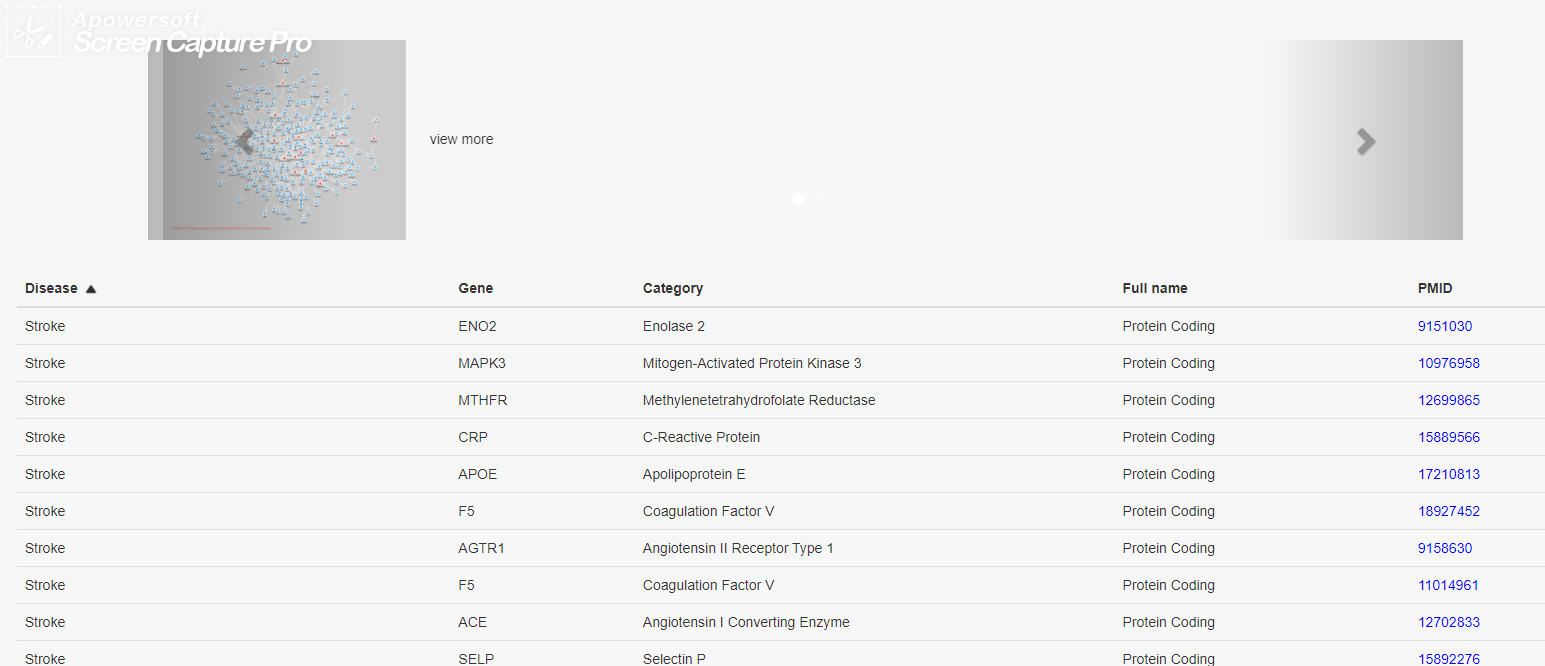
Here is a brain disease gene network diagram. You can click "View More" to see the original image (1) , the relationship between brain disease and genes (2) , and the literature information supporting these relationships (3) .

In the search interface, the user selects the search type(1), enters the search keywords, or clicks "Example" (2)to get an example display.

The preliminary search results (1) are displayed here, as well as the quantity statistics of the search results and the relationship models related to them are available for selection (2) .

Here is a brain disease gene network diagram. You can click "View More" to see the original image (1) , the relationship between brain disease and genes (2) , and the literature information supporting these relationships (3) .
3D brain structure search
3D brain structure study, a fast navigation combined with a high-precision brain anatomy model and organ chip database.
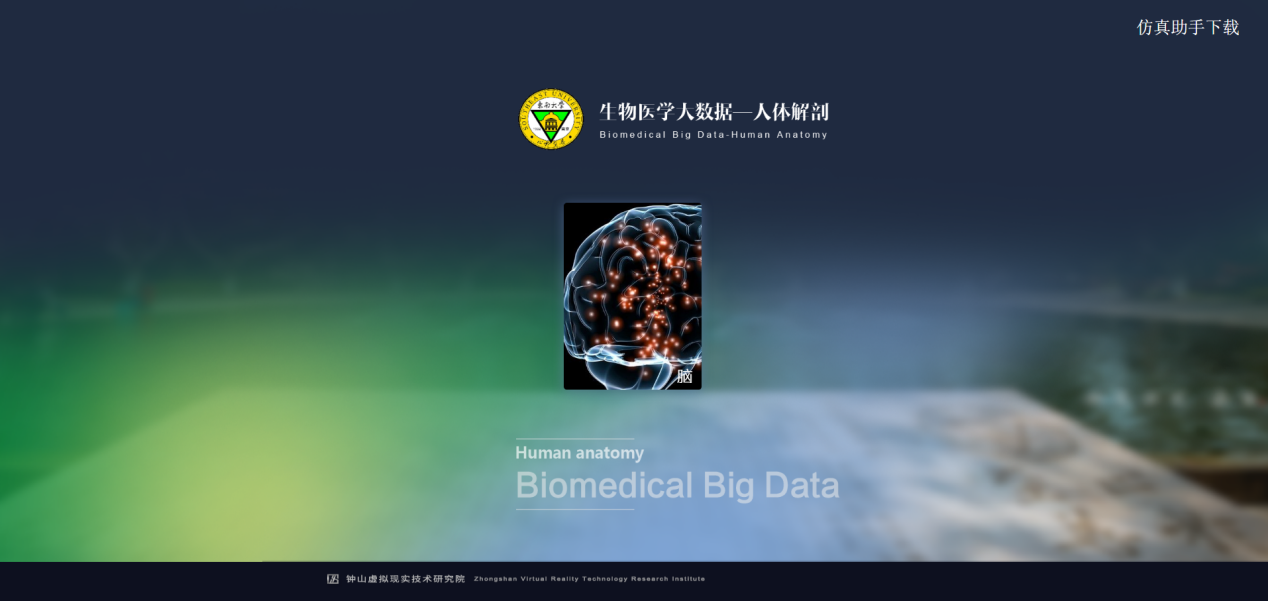
This is the initial interface, you can click on the picture of the brain (1) to proceed to the next step. If you use it for the first time, you need to click on the "仿真助手下载" (2) to install the plug-in.
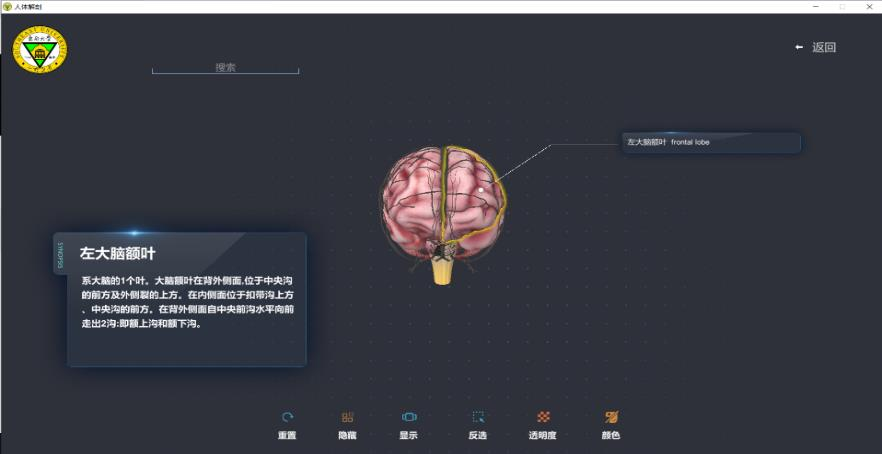
A high-precision 3D brain model (1) is provided here, and users can browse the brain model by rotating, zooming in, and zooming out with the mouse. In the upper left corner, you can enter keywords to search for the corresponding brain region (2). At the bottom left is the annotation to this brain region (3). At the bottom is the browsing setting (4), which the user can adjust as needed. Click the label on the left to link to the organ chip database resource corresponding to the brain region (5).
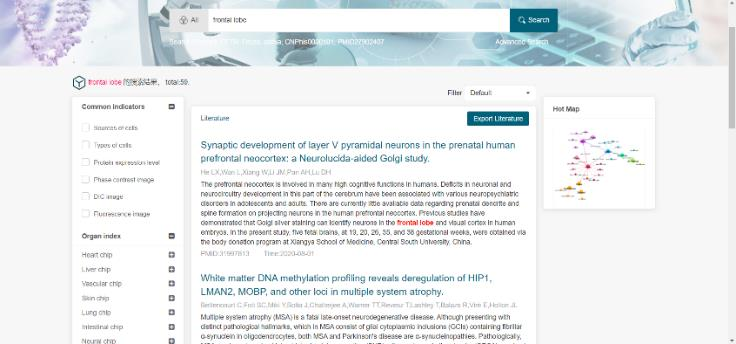
Here is the interface of organ chip database information after clicking the brain part label, you can learn the latest paper information related to the brain area (2), you can filter according to the document type label (1), and the authors of the paper refer to each other picture "Hot Map "(3).

This is the initial interface, you can click on the picture of the brain (1) to proceed to the next step. If you use it for the first time, you need to click on the "仿真助手下载" (2) to install the plug-in.

A high-precision 3D brain model (1) is provided here, and users can browse the brain model by rotating, zooming in, and zooming out with the mouse. In the upper left corner, you can enter keywords to search for the corresponding brain region (2). At the bottom left is the annotation to this brain region (3). At the bottom is the browsing setting (4), which the user can adjust as needed. Click the label on the left to link to the organ chip database resource corresponding to the brain region (5).

Here is the interface of organ chip database information after clicking the brain part label, you can learn the latest paper information related to the brain area (2), you can filter according to the document type label (1), and the authors of the paper refer to each other picture "Hot Map "(3).
Brain and gut microbiome
Brain and gut microbiome, this part collects the brain-associated gut microbiome reported in the literature, and original annotations are added for reference.
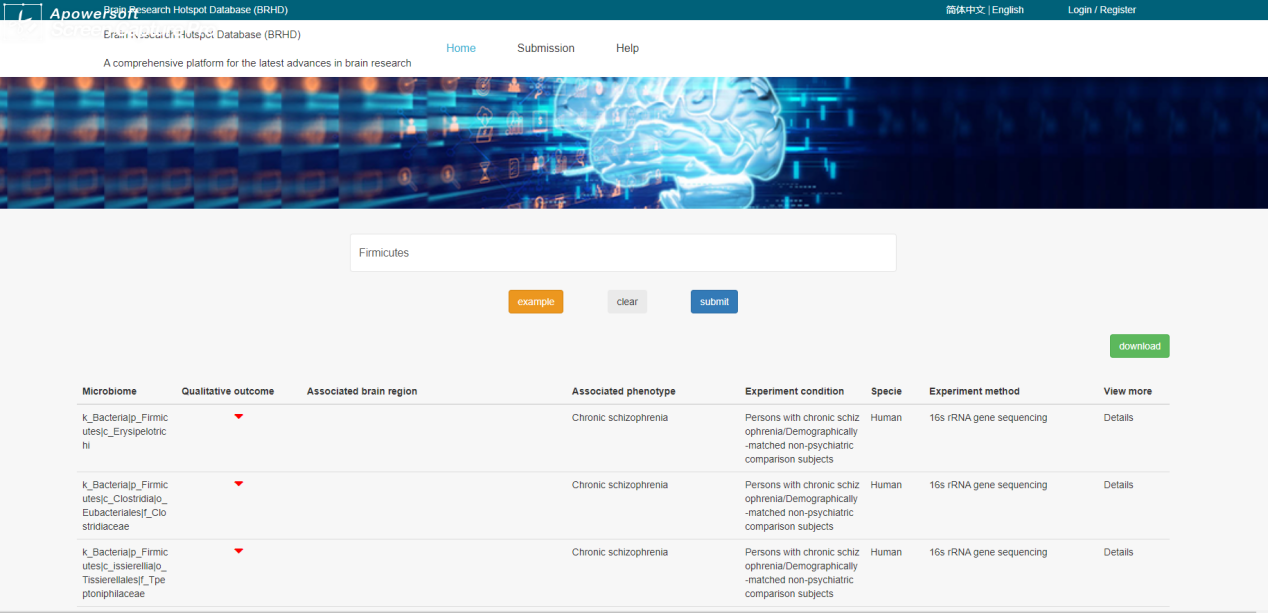
This is the search and browse interface, which can provide keyword search and example display (1). Below is the relationship between brain diseases and microbes we have collected and sorted out (2). You can download the original data (3) on the upper left. You can click "Details" to get more information (4).

This is the detailed interface of brain and gut microbiome. It provides experimental information (1) and literature information (2) supporting these connections. Users can click the PMID link to the original literature.

This is the search and browse interface, which can provide keyword search and example display (1). Below is the relationship between brain diseases and microbes we have collected and sorted out (2). You can download the original data (3) on the upper left. You can click "Details" to get more information (4).

This is the detailed interface of brain and gut microbiome. It provides experimental information (1) and literature information (2) supporting these connections. Users can click the PMID link to the original literature.
Popular Resources
Research frontier
Research frontier, which contains 423681 articles about brain science that are publicly available on the web of Science in recent ten years, including basic information such as title, author, abstract, publishing information and full text links.
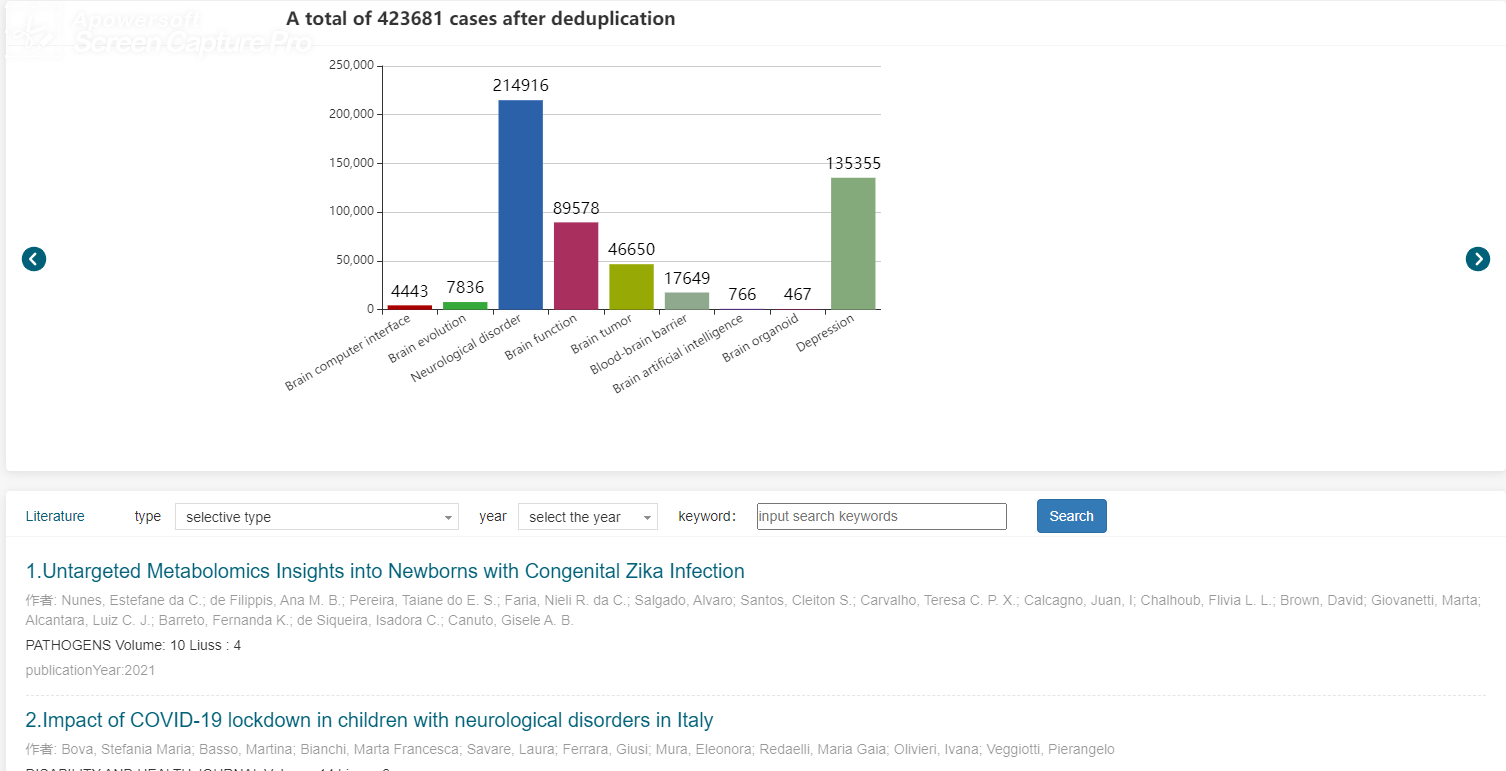
Here we provide literature and statistics (1). Users can filter by file type and year (2), and search by keywords (3).
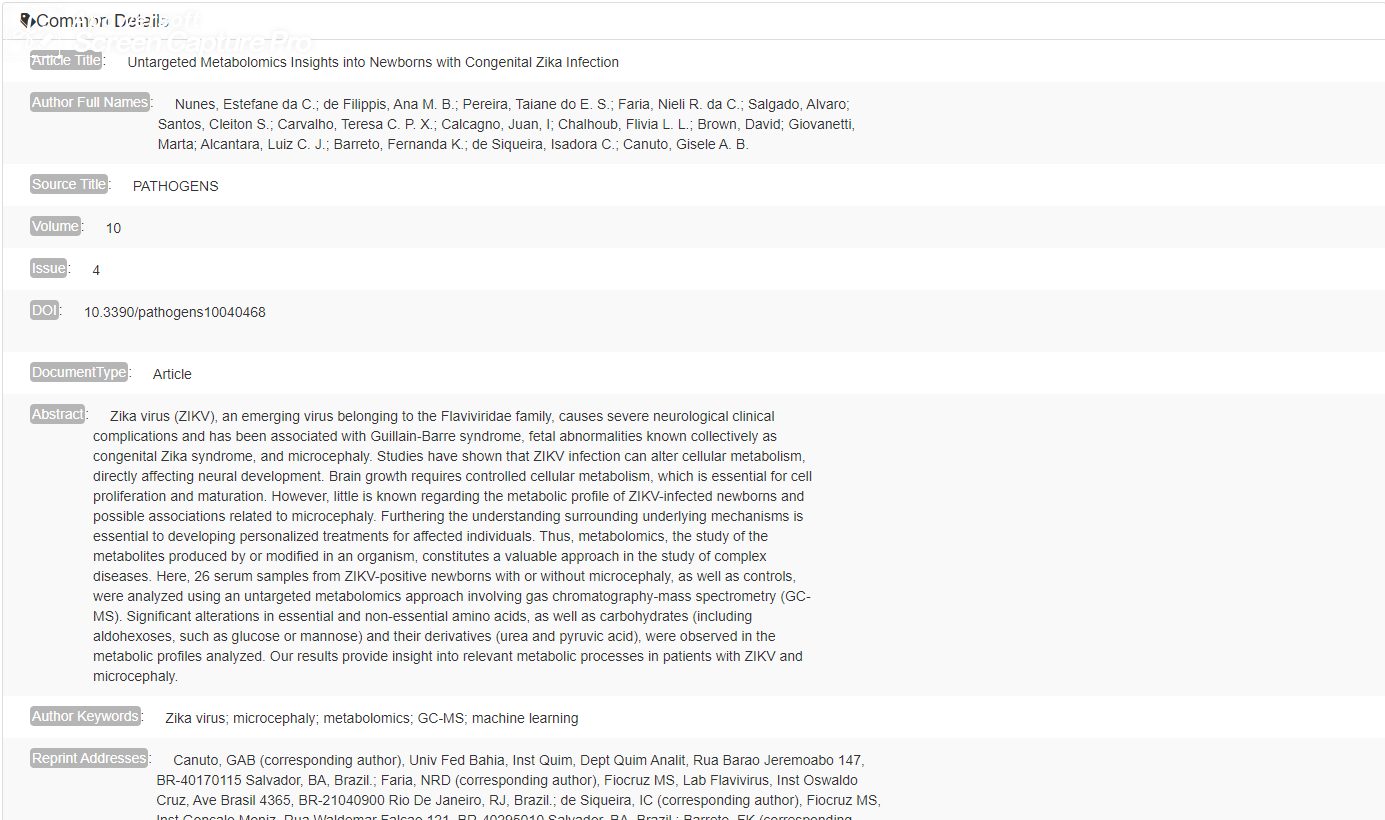
The detailed information of the paper is provided here, and the user can click "Pubmed" to directly link to the original paper.

Here we provide literature and statistics (1). Users can filter by file type and year (2), and search by keywords (3).

The detailed information of the paper is provided here, and the user can click "Pubmed" to directly link to the original paper.
Brain initiative
Brain initiative, which contains information about brain science projects that have been put forward and implemented by major countries, including brain projects of six countries or regions, including the United States, the European Union, Japan, Australia, Canada and South Korea, as well as seven well-known brain science projects, such as blue brain project.
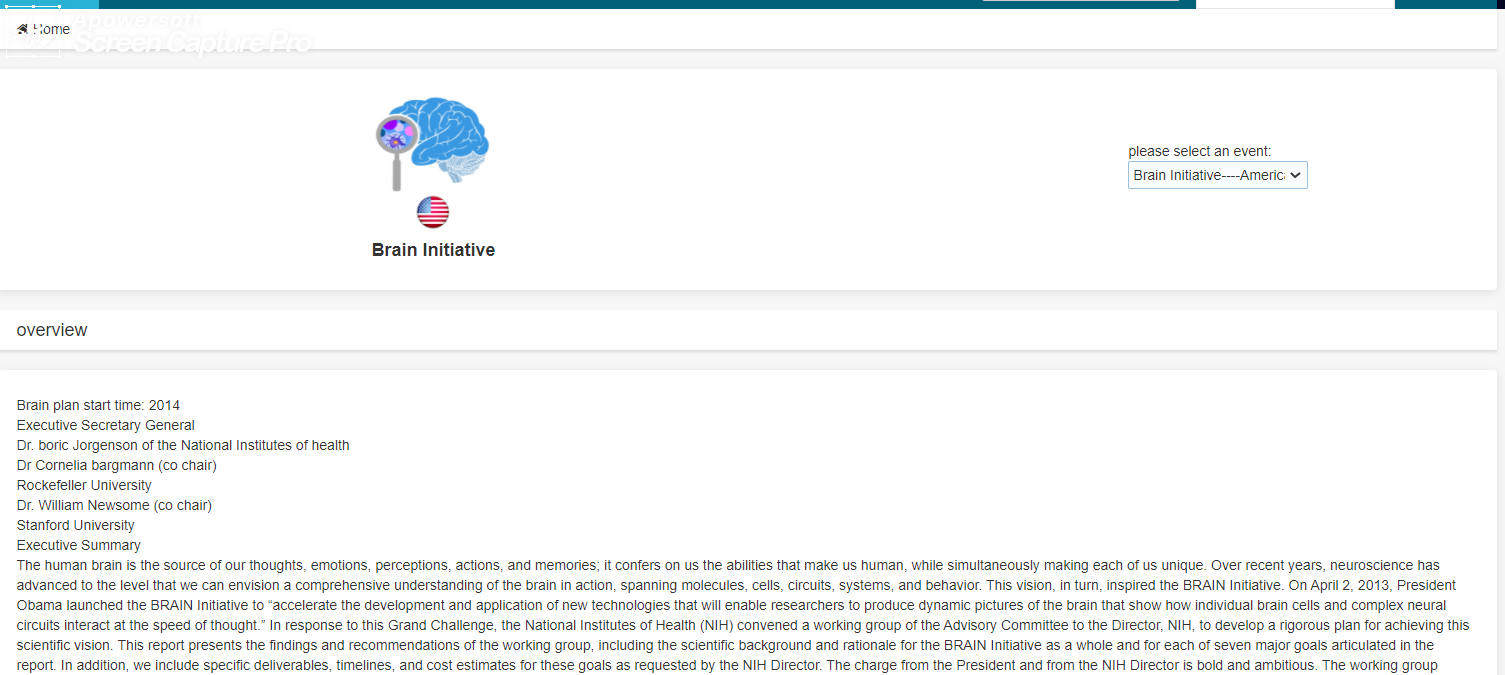


Here we provide detailed information (2), main persons in charge (3), and timeline information (4) of large-scale brain research projects in various countries around the world (1) that have been announced. The user can click on the brain project abbreviation at the top right of the timeline to link to the official website of the brain project (5).



Here we provide detailed information (2), main persons in charge (3), and timeline information (4) of large-scale brain research projects in various countries around the world (1) that have been announced. The user can click on the brain project abbreviation at the top right of the timeline to link to the official website of the brain project (5).
Scientist
Scientist, which is based on 10122 highly cited papers in brain science in recent ten years (highly cited papers: highly cited papers refer to the papers with the top 1% citation frequency in recent ten years) were collected from science.

This is the image of the author of the highly cited literature co-published (1). The user can click on the image to browse the original image and the corresponding scientist information (2).
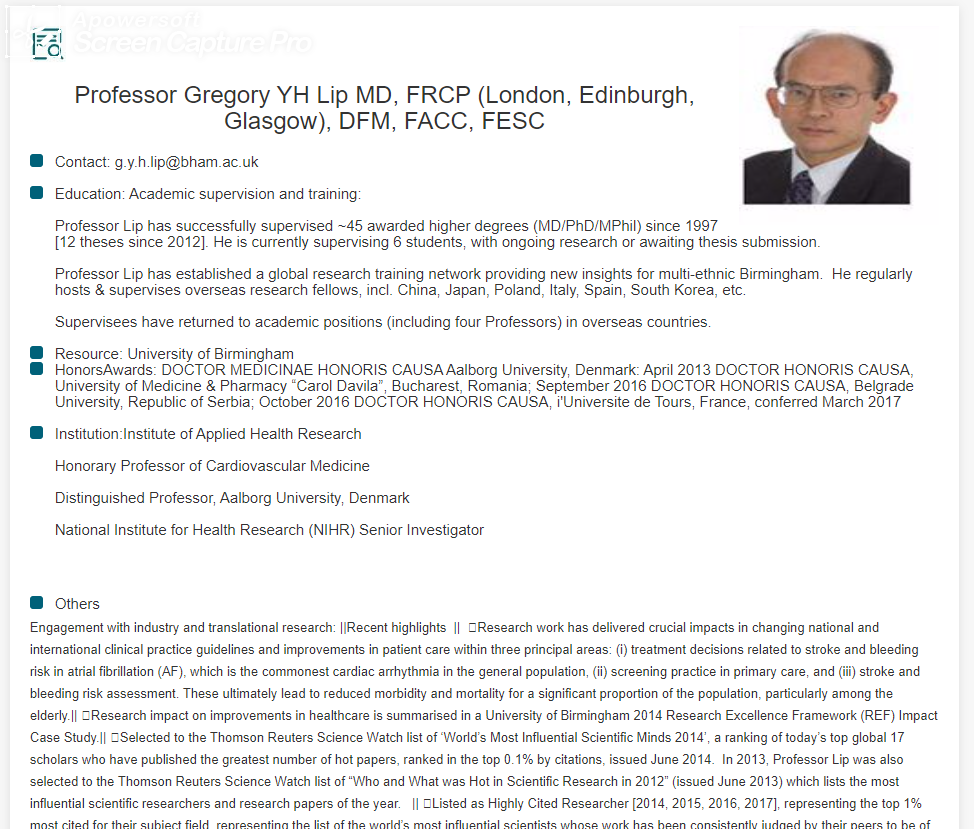
This is a variety of related information provided by a scientist.

This is the image of the author of the highly cited literature co-published (1). The user can click on the image to browse the original image and the corresponding scientist information (2).

This is a variety of related information provided by a scientist.
Transcriptome analysis
Transcriptome analysis. The database includes 3416 transcriptome data from Array Express database and 6169 transcriptome data from Gene Expression Omnibus (GEO) database in recent ten years, providing convenience for users to analyze transcriptome.
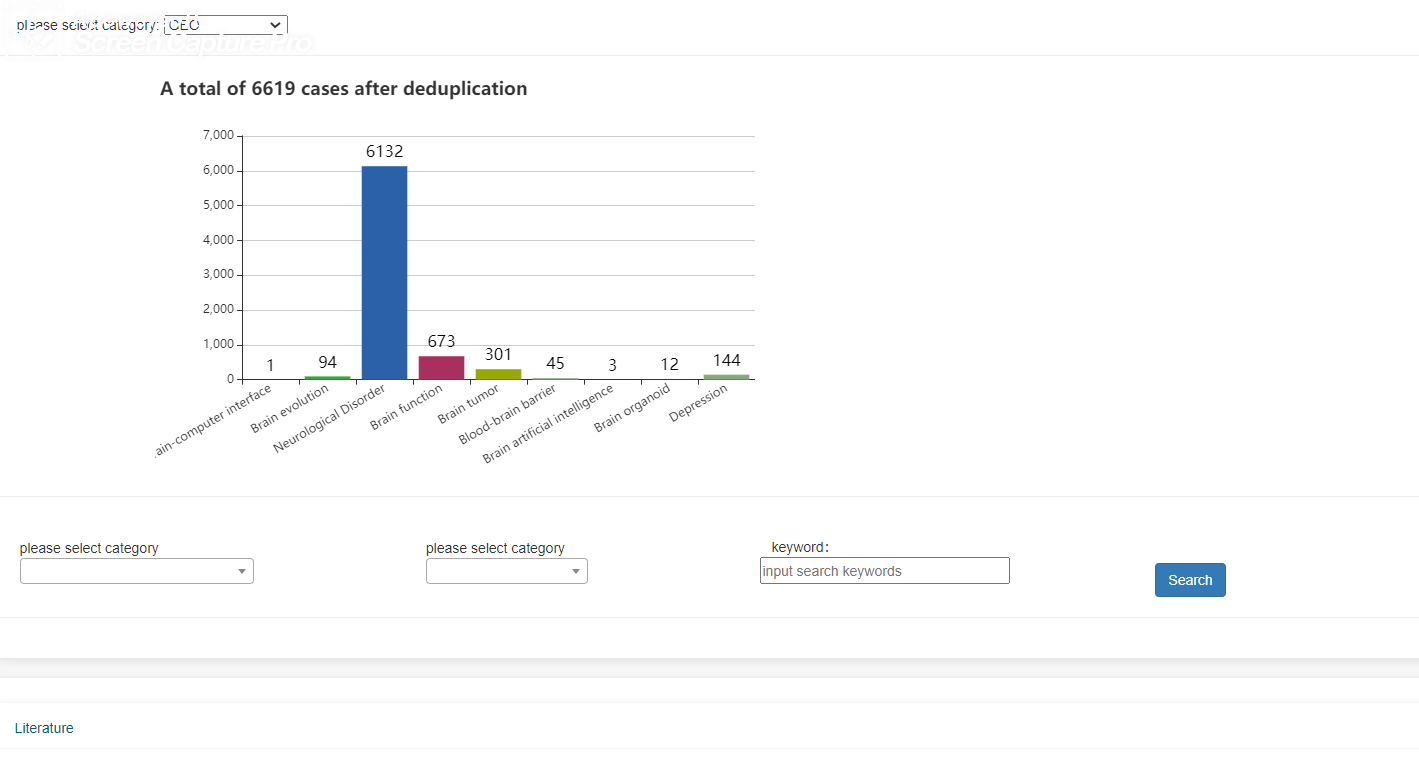
Transcriptome data and statistics (1) are provided here, and users can filter data according to data sources (2), experimental types and species (3) and conduct keyword searches (4).
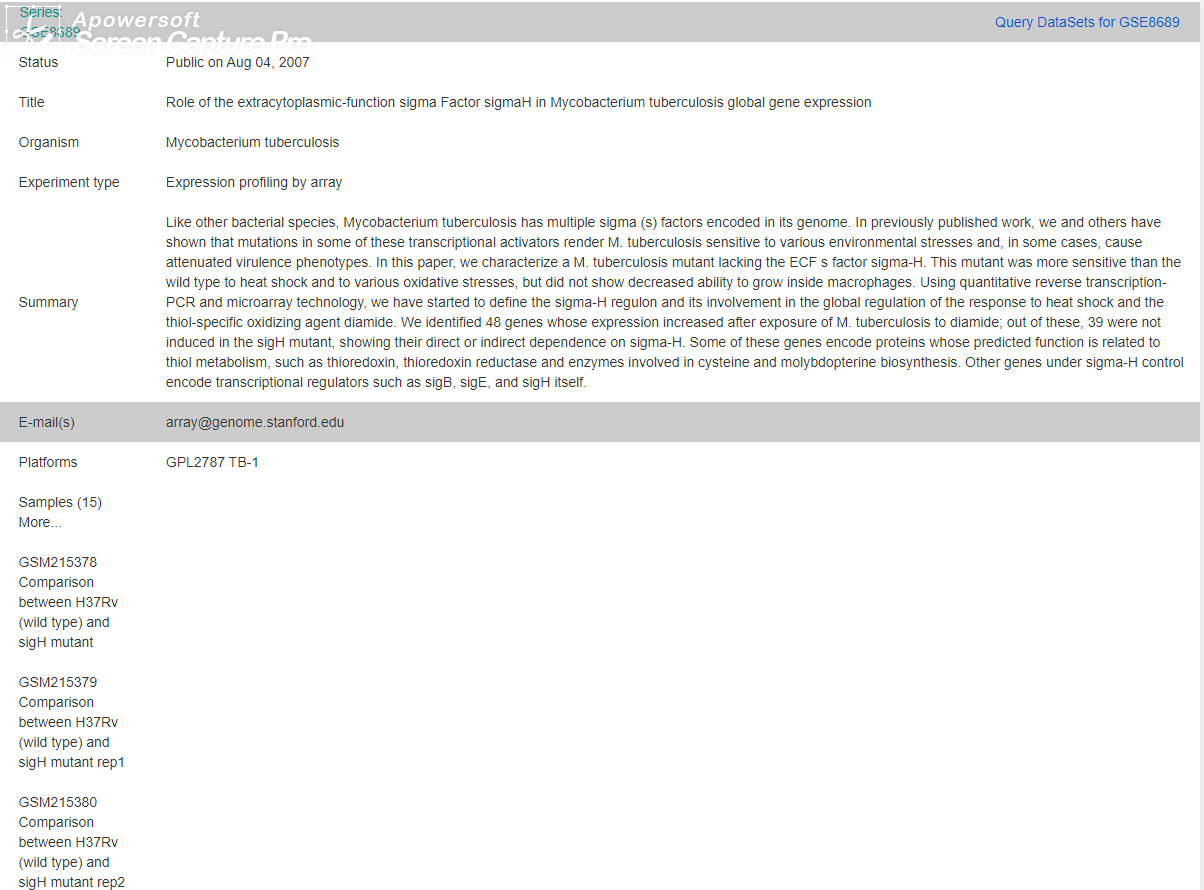

This is the detailed interface of transcriptome data, providing various information about experiments and data, and providing raw data download.

Transcriptome data and statistics (1) are provided here, and users can filter data according to data sources (2), experimental types and species (3) and conduct keyword searches (4).


This is the detailed interface of transcriptome data, providing various information about experiments and data, and providing raw data download.
Patent
Patent database contains 46,344 invention patents related to brain science, and provides patent details and full text links. These patents obtain patent numbers from the Dewent Innovations Index database through system keywords, and then use the collected patent numbers to query and sort the patent details in the Free Patents Online database.

Here provides brain science patents and statistics (1), users can filter according to the type of experiment (2), and search according to keywords (3).
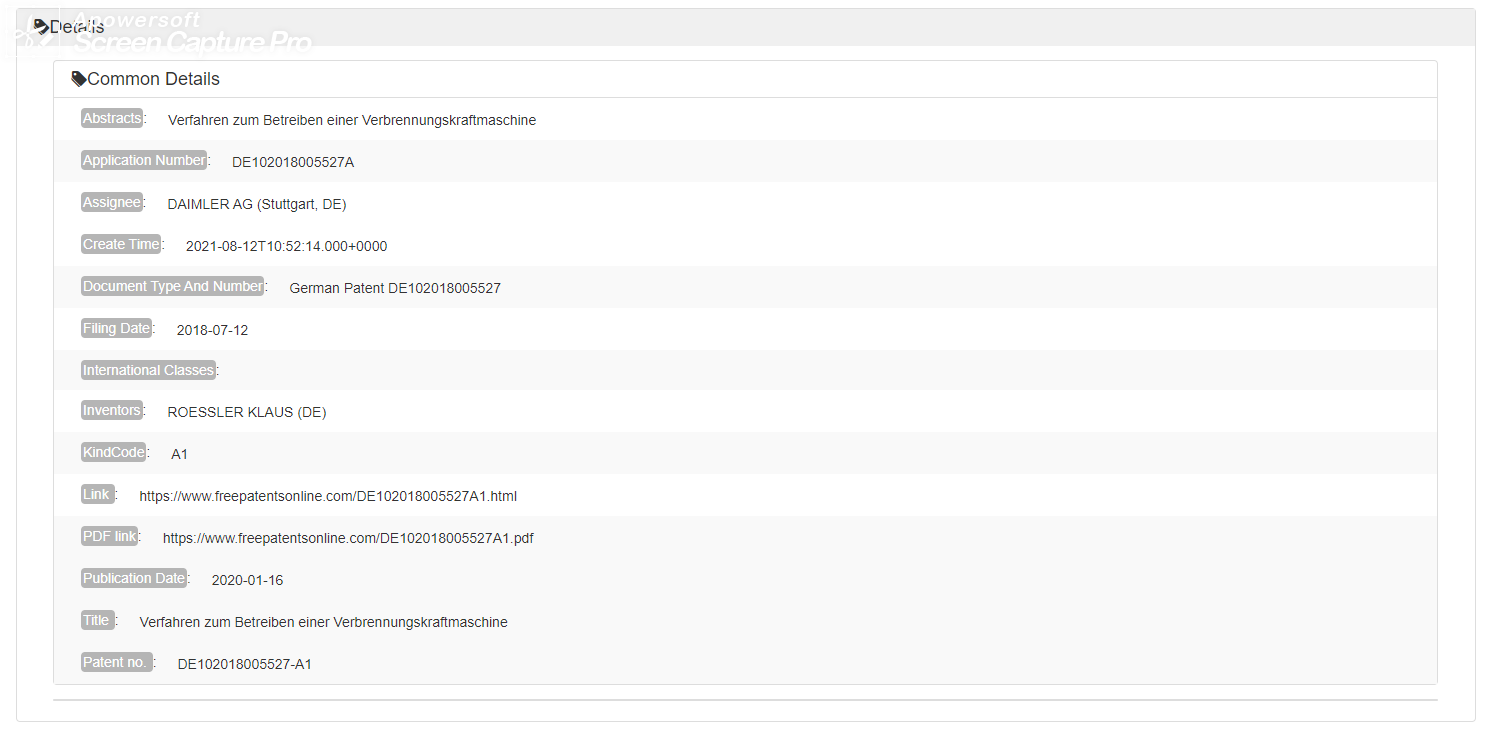
This section provides various detailed information about patent .

Here provides brain science patents and statistics (1), users can filter according to the type of experiment (2), and search according to keywords (3).

This section provides various detailed information about patent .
Cell marker
Cell Marker database contains 124 cases of human brain cell markers and 137 cases of mouse brain cell marker information. Users can select by species type, tissue type and cell type, then the system will display the relevant cell markers and the literature information supporting this record.

This part of the user can choose according to the species type, tissue type, cell type, and the cell markers of the selected cell will be displayed below.
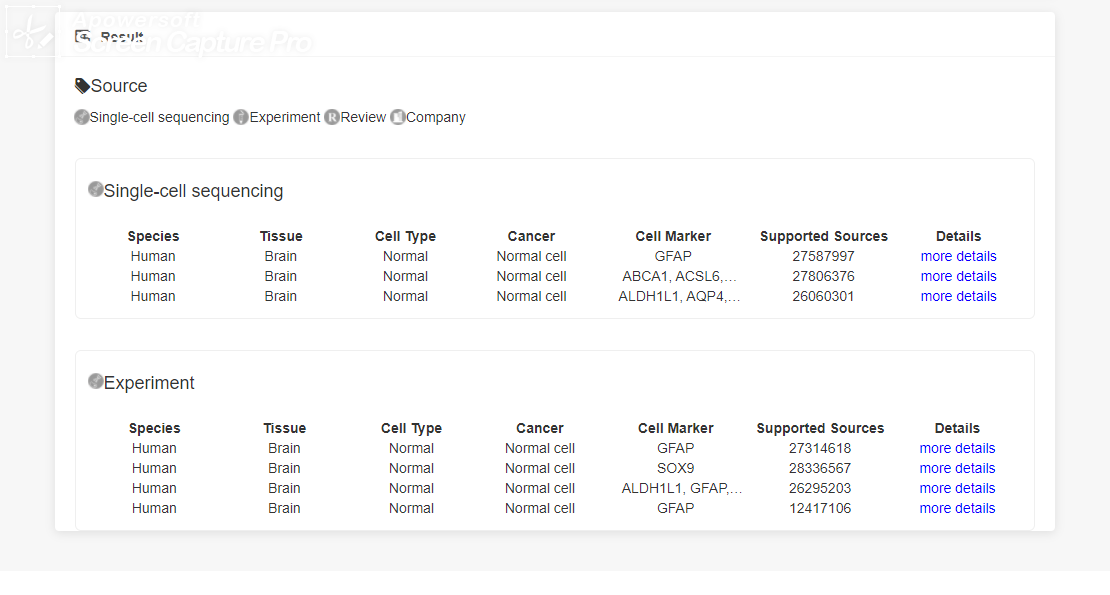
This section will provide paper information that supports the conclusion of cell marker.

This part of the user can choose according to the species type, tissue type, cell type, and the cell markers of the selected cell will be displayed below.

This section will provide paper information that supports the conclusion of cell marker.
Intellectual property involved of the data sources
Comprehensive Report
The data sources of our database are mainly major open-source research databases. Data are downloaded and mined according to the regulations of the original databases, and the source and the original website link are uniformly marked in a prominent place. The non-local content of our database only shows relevant information such as abstracts, not the full text, and provides information on original sources and links.
Research frontier
We use the summarized keyword groups to conduct Boolean logic searches in Web of science core collection (https://www.webofscience.com/wos/alldb/basic-search), obtain the retrieved PubMed ID information and the relevant information on PubMed (https://pubmed.ncbi.nlm.nih.gov/) with the PubMed ID and organize it.
Scientist
Based on the results of literature search, we use Citespace to analyze and obtain the open information of the most popular scientists in brain science research according to certain standards, and then use this information to manually obtain open information for public on the official websites of various scientists and organize it.
Brain initiative
We summarize the information of the large-scale brain science projects that have been confirmed to be launched in the world through the literature, and then manually obtain open information on the official website of these brain projects with citations of the original sources.
Transcriptome analysis
We used the summarized keyword groups to obtain various transcriptome data from Gene Expression Omnibus (GEO, https://www.ncbi.nlm.nih.gov/geo/) and Arrayexpress (https://www.ebi.ac.uk/arrayexpress/) and compiled them.
Patent
We use the summarized keyword groups to retrieve the Patent Number in the Derwent Innovations Index database (https://www.webofscience.com/wos/alldb/basic-search), and then use the obtained Patent Number information to collect the detailed information of the patent in Free Patent Online (https://www.freepatentsonline.com/). The original sources have been well cited.
Cell Marker
This part of the data is mainly from the CellMarker database (http://biocc.hrbmu.edu.cn/CellMarker/index.jsp) and combined with the data summarized from the literature. The original sources have been well cited.
Disease-genome network
We use the summarized keyword groups to manually obtain the associations and supporting data between diseases and genes and mutations in the Online Mendelian Inheritance in Man database (OMIM, https://omim.org/) and Malacards database (https://www.malacards.org/), and then aggregate them and use Cytoscape software to visualize and analyze them. The original sources have been well cited.
Brain and gut microbiome
We used the summarized keyword groups to search and download original research literature on brain and gut microbiome on PubMed (https://pubmed.ncbi.nlm.nih.gov/), and manually reviewed and annotated the formation. The original sources have been well cited.
3D brain structure study
We set up a high-precision 3D brain anatomy model and link it to the cooperative database Organ on a chip Database (http://www.organchip.cn/) to form the latest research on brain anatomical sections related to organ chips.
Data management policy
Privacy and Security Policy
| Disclosure | BRHD does not disclose, give, sell, or transfer any personal information about our visitors, unless required for law enforcement or by statute. |
| Personally Identifiable Information (PII) | BRHD hopes to create an accessible communication community that contributes to scientific research. When you visit the BRHD websites, we do not collect any personally identifiable information (PII) about you, unless you choose to explicitly provide it to us. We collect some information when users register for a website account, such as email address or type of work institution, to help us better understand how users use the site and how to improve site performance to make it more helpful. The BRHD does not collect information for commercial marketing or any purpose unrelated to BRHD's Mission. |
| What Type of Information BRHD Collects | We don’t collect any type of information from visitors. |
| How to Opt Out or Disable Cookies | If you do not wish to have session or persistent cookies placed on your computer, you can disable them using your Web browser. If you opt out of cookies, you will still have access to all information and resources the BRHD website provides. |
| Copyright Status | Files and files on the BRHD web server can be downloaded and copied for free. Unlike traditional media repositories, BRHD shares are free. Everyone is free to copy, use any document here, as long as they follow the terms specified by the author; this usually means properly attributing the source and author, and releasing copies/improvements to others with the same freedom. The license conditions for each media file can be found on its description page. The Brain Research Hotspot Database (BRHD) itself and the text within it are licensed under the Creative Commons Attribution/Share Alike License (https://creativecommons.org/licenses/by-sa/3.0/). |
Disclaimers
| Liability | For documents and software available from this server, the Southeast University does not warrant or assume any legal liability or responsibility for the accuracy, completeness, or usefulness of any information, apparatus, product, or process disclosed. |
| Endorsement | BRHD does not endorse or recommend any commercial products, processes, or services. The views and opinions of authors expressed on BRHD's Web sites do not necessarily state or reflect those of the Southeast University, and they may not be used for advertising or product endorsement purposes. |
| External Links | Some BRHD Web pages may provide links to other Internet sites for the convenience of users. BRHD is not responsible for the availability or content of these external sites, nor does BRHD endorse, warrant, or guarantee the products, services, or information described or offered at these other Internet sites. Users cannot assume that the external sites will abide by the same Privacy Policy to which BRHD adheres. It is the responsibility of the user to examine the copyright and licensing restrictions of linked pages and to secure all necessary permissions. |
| Medical Information | It is not the intention of BRHD to provide specific medical advice, but rather to provide users with information to better understand health and disease. Specific medical advice will not be provided, and BRHD urges you to consult with a qualified health professional for diagnosis and for answers to your personal medical questions. |
Submission
Step 1
Users choose according to the type of data they are going to upload. There are mainly two types of data: literature and patent.
Step 2
According to the selected data type, fill in different information and upload the corresponding file. Paper information needs to fill in these contents, Publication Journal, Pubilcation Date, Title, Author, Departmen, Abstract. Patent information needs to fill in these contents, Application Number, Application Date, Country, Assignee, Title, Inventor.
Step 3
Waiting for the website audit result, the audit result will be sent to the account mailbox in the form of email.
Login
Introduce
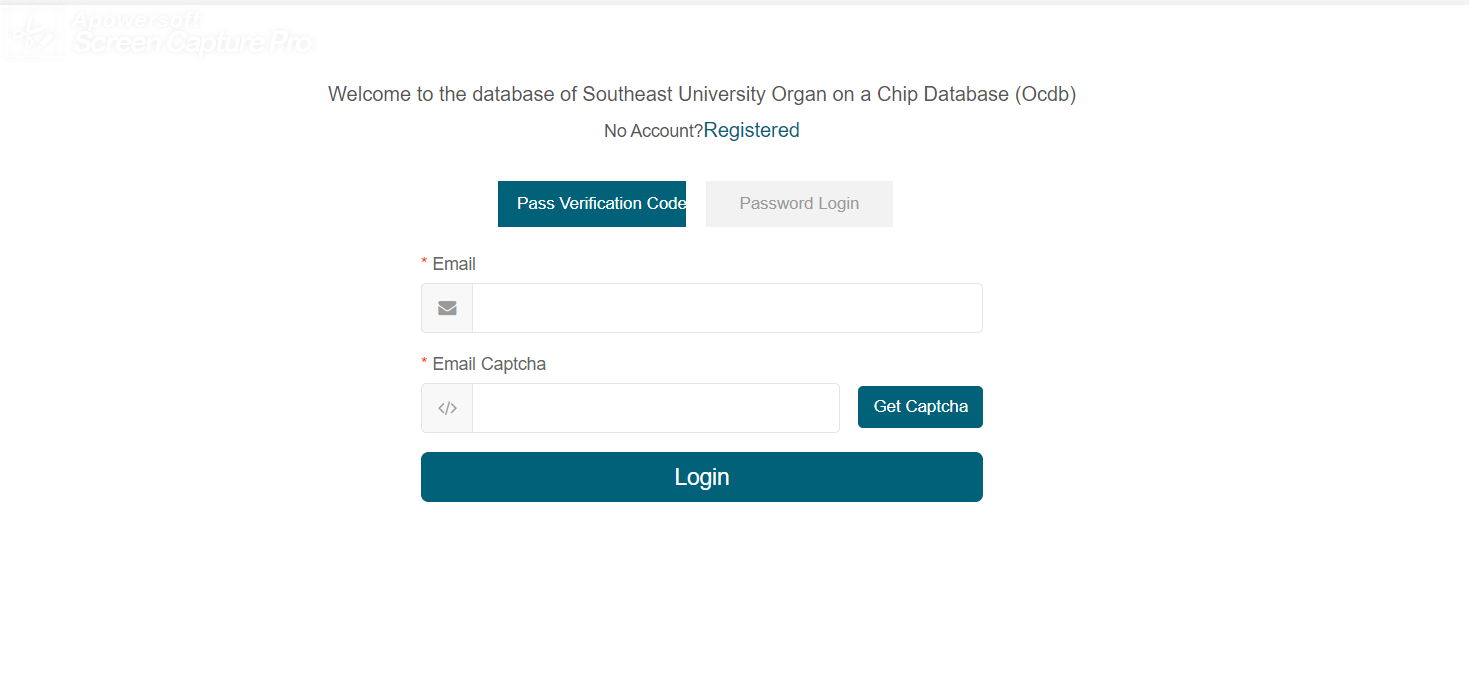
Users can register via email and log in to the website account on this page to get more services.
Searching the Brain Research Database
Use a Global Search to search the whole BRHD from the Home page

1,Go to the BRHD Home page
2,Select the database to search
3,Type search text in the Search bar
4,Click the Search button
Regular search

1,Enter the database you want to query
2,Type the keywords you want to search
3,Choose the filter criteria provided
4,Click the Search button